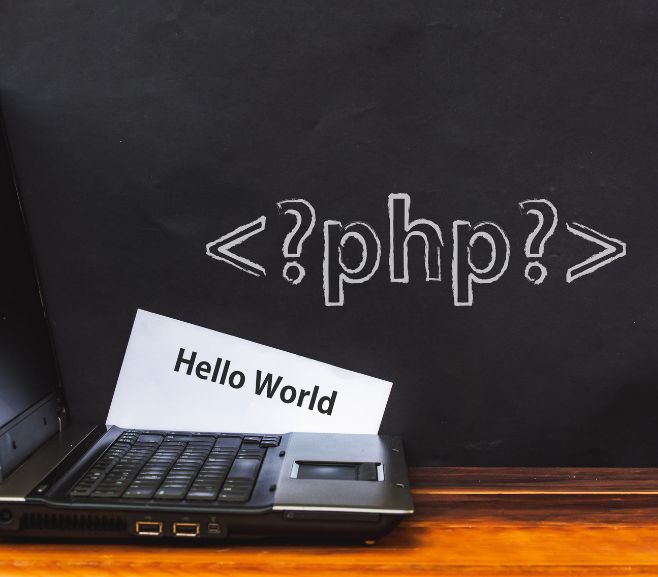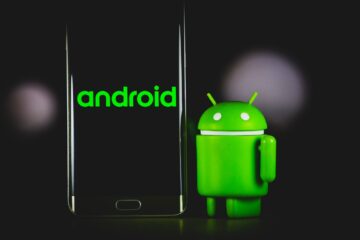PHP (Hypertext Preprocessor) is a server-side scripting language used for web development. It is an open-source language, which means anyone can use and modify it. PHP is widely used for creating dynamic web pages and web applications. It is easy to learn, simple to use, and widely supported, making it a popular choice for web developers. In this article, we will take a beginner’s look at PHP programming, including its history, features, and how it is used.
History of PHP
PHP was created by Rasmus Lerdorf in 1994. Initially, it was just a set of Common Gateway Interface (CGI) scripts that Lerdorf used to track visitors to his website. Later on, he added more functionality to the language and released it as open-source software. The name “PHP” originally stood for “Personal Home Page,” but it was later changed to “Hypertext Preprocessor.”
Over the years, PHP has evolved and improved with the help of its dedicated community of developers. Today, it is one of the most widely used server-side scripting languages in the world.
PHP is a server-side scripting language used primarily for web development but also used as a general-purpose programming language. In this article, we will take a look at the history of PHP, its evolution, and its current state.
Early Days of PHP
In 1994, Rasmus Lerdorf created a set of Common Gateway Interface (CGI) scripts to track visitors to his website. He named it “Personal Home Page Tools” or PHP Tools for short. The following year, he released the source code for PHP Tools to the public. The language was originally designed to create dynamic web pages and fill out HTML forms.
PHP/FI
Two developers, Andi Gutmans and Zeev Suraski, took Lerdorf’s original PHP code and added support for database connectivity and introduced the first version of PHP/FI (Personal Home Page/Forms Interpreter) in 1997. PHP/FI enabled web developers to write dynamic web pages that interacted with databases.
PHP 3
In 1998, Gutmans and Suraski rewrote the core of PHP/FI and created PHP 3, which was a major milestone in PHP’s development. It introduced a new parser, support for cookies, and support for a range of web servers, including Apache and Microsoft’s IIS.
PHP 4
PHP 4 was released in 2000, and it brought many new features to the language. It included support for object-oriented programming, sessions, and improved support for databases. PHP 4 also introduced a new memory manager that improved performance and stability.
PHP 5
PHP 5 was released in 2004, and it was a major overhaul of the language. It included a new object model, improved support for XML and web services, and introduced the Zend Engine, which was a significant improvement to the language’s performance.
PHP 7
PHP 7 was released in 2015, and it brought significant performance improvements to the language. It introduced a new version of the Zend Engine, which improved memory usage and reduced the number of server requests required to process PHP code.
PHP Today
PHP is one of the most popular programming languages used on the web today. It is used by millions of websites, including major platforms like Facebook, Wikipedia, and WordPress. PHP continues to evolve, with new versions of the language being released regularly, and the language is widely supported by web hosts and development platforms.
Read: Latest Web Programming Technologies?
Features of PHP
Server-Side Scripting
One of the key features of PHP is that it is a server-side scripting language. This means that PHP scripts are executed on the server before the HTML is sent to the client’s web browser. This allows developers to create dynamic web pages and web applications that can interact with databases and other server-side technologies.
Platform Independence
PHP is platform-independent, which means that it can run on any operating system that supports a web server that can run PHP scripts. This includes Windows, Linux, macOS, and many other operating systems.
Open-Source
PHP is open-source software, which means that anyone can use and modify the language without having to pay for it. This has led to a large and dedicated community of PHP developers who contribute to the language’s development and create libraries and frameworks to make PHP programming easier and more efficient.
Easy to Learn
PHP is relatively easy to learn, even for beginners. Its syntax is simple and straightforward, and there are many resources available online to help new developers get started.
Object-Oriented
PHP is an object-oriented programming (OOP) language, which means that it allows developers to create classes and objects that can be reused and modified. This makes PHP code more modular and easier to maintain.
Also Read: First Programming Language: Choosing the Right One for You
How PHP Works
Basic Syntax
PHP code is enclosed in <?php ?> tags. Anything outside these tags is considered HTML and is sent to the client’s web browser as is. Inside the PHP tags, developers can write PHP code that will be executed on the server. For example, the following code will print “Hello, World!” to the screen:
<?php
echo "Hello, World!";
?>Variables and Data Types
In PHP, variables are used to store values that can be used later in the program. PHP supports several data types, including integers, floats, strings, and booleans. Variables in PHP are declared using the $ symbol, followed by the variable name. For example:

Operators
PHP supports several operators, including arithmetic, assignment, comparison, and logical operators. For example:

Control Structures
Control structures in PHP are used to control the flow of the program. PHP supports several control structures, including if-else statements, loops, and switch statements. For example:

Functions
Functions in PHP are used to encapsulate a block of code that can be reused later in the program. PHP supports both built-in functions and user-defined functions. For example:

Arrays
Arrays in PHP are used to store multiple values in a single variable. PHP supports both indexed arrays and associative arrays. For example:

Common Uses of PHP
PHP is widely used for creating dynamic web pages and web applications. Some common uses of PHP include:
Dynamic Web Pages
PHP can be used to create dynamic web pages that can display different content depending on user input or other factors. For example, a PHP script can be used to display different content depending on the user’s location, browser type, or other factors.
Web Applications
PHP can be used to create web applications that can interact with databases and other systems. With PHP, developers can create web applications that can handle user authentication, data input and output, and other complex tasks. Popular web applications built with PHP include WordPress, Facebook, and Wikipedia.
E-commerce Websites
PHP is commonly used for building e-commerce websites because it can handle complex transactions and integrate with payment gateways. Popular e-commerce platforms built with PHP include Magento, OpenCart, and WooCommerce.
Content Management Systems
PHP is often used for building content management systems (CMS) that can manage and organize digital content such as text, images, and videos. Popular CMS built with PHP include WordPress, Drupal, and Joomla.
APIs and Web Services
PHP can be used for building APIs and web services that can be used by other applications or websites. With PHP, developers can create RESTful APIs that can be used for data exchange between applications.
Getting Started with PHP
To get started with PHP, you’ll need a web server that supports PHP, such as Apache or Nginx. You’ll also need a text editor or integrated development environment (IDE) to write PHP code. Some popular text editors and IDEs for PHP include Sublime Text, Atom, and PhpStorm.
Once you have your development environment set up, you can start learning PHP by following online tutorials or reading PHP books. Some popular PHP learning resources include PHP.net, Codecademy, and Udemy.
In conclusion, PHP is a powerful programming language that is widely used for creating dynamic web pages and web applications. With its easy-to-learn syntax, built-in functions, and extensive documentation, PHP is a great language for beginners to learn. By mastering the basics of PHP, developers can build powerful web applications and make a career in web development.




